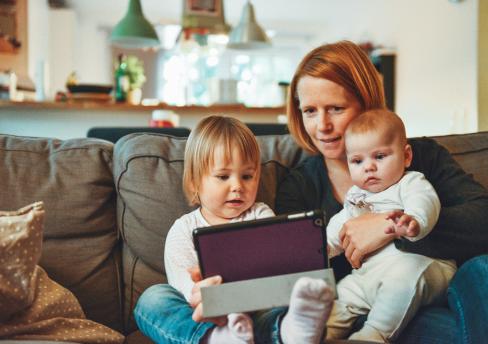Since lockdown began in March, one of the critical questions for family lawyers has been how the courts would handle proofs and other substantive hearings. Some of these questions can now be answered following the first videoconferenced family proof in the Court of Session, which took place at the end of June. Having acted for the pursuer, I have some reflections on the challenges and opportunities virtual proofs present for family practitioners.

The proof itself ran smoothly, despite occasional issues with connectivity and sound quality, thanks to the hard work of the court clerk and IT staff behind the scenes. While the technical work was undertaken by the court team, agents need to be alert to the preparation tasks specific to a videoconferenced proof, such as tests of the videoconference with parties and individual witnesses, and liaising with the clerk and opposing agents about practical queries. Agents will need to flag up to clients that this work will be required, and include it in any fee agreements. While this work is in a sense administrative, it is also essential in that it helps to ensure the proof runs effectively. While Legal Aid sanction may not be required, this may be worth discussing with SLAB to avoid issues at the accounts stage.
With Affidavits being used as evidence in chief as per the Practice Note, it was helpful that video notarization was authorised in the Coronavirus (No 2) (Scotland) Act 2020 before the last date for lodging! All Affidavits were notarized over videolink, scanned and e-signed by agents. Since all the parties and witnesses in this case were overseas, this was actually easier to work with than the logistical nightmare of organising local notarization and couriering. It is to be hoped that remote notarization remains an option after the pandemic.
In terms of the substance of the proof, and the decision, which was promptly issued, a number of interesting points arise.
Firstly, the court held that the use of videoconferencing as such did not make it more difficult to assess credibility and reliability. The Lord Ordinary made it clear that she could and did make a full evaluation of all the witnesses, including reference to tone of voice and body language. This is helpful guidance, given that family cases often involve the court assessing contradictory accounts of events where there is little documentation to confirm either.
However, it remains important to brief witnesses on how to conduct themselves in court. Anyone who has had an online team meeting since March will now realise that a lot of non-verbal information comes across in video calls (I write as someone who realised her whisky collection was providing an inadvertent backdrop!). While there's no suggestion any witnesses in this case acted inappropriately, there is more risk of unexpected events when someone is giving evidence in their own space, compared to a physical courtroom whose layout and atmosphere provide clear and immediate cues about demeanour.
The videoconference test sessions are an opportunity to consider matters such as the room in which the witness is to give evidence, the positioning of their video and audio equipment, and what may be visible in the background. It is worth being very clear with lay witnesses on matters which may seem obvious such as what to wear and the positioning of their camera. Witnesses also need to be warned in advance that they must give evidence alone, from a room where they cannot be overheard or interrupted.
Incidentally, agents don't have to worry about marauding children or pets, as we do not appear on screen and are muted throughout. So, while one of my pet hates about videoconferencing is that it's impossible to make direct eye contact, I can't comment on how it affects cross-examination and submissions. This does also mean you can't tug on Counsel's sleeve, though, so it's important to set up offline communication channels such as a WhatsApp group so that you can do so metaphorically.
Finally, virtual productions may need to be managed differently. In a previous videoconferenced commercial proof, counsel reported that witnesses were sent a packet of documentation not to be opened until the start of evidence. In this case, this was not logistically feasible. Instead, agents agreed a ‘core bundle’ of productions and emailed this as a single PDF to each witness with instructions not to consider them before giving evidence. In a proof with a larger number of productions this might have been more difficult so it is worth focusing on the logistics as early as possible. While productions can be screenshared during a proof, the drawback is that this takes up space on a crowded screen.
Overall, perhaps the most surprising thing about the whole experience was how quickly videoconferencing court began to feel like business as sort-of-usual. Instead of marvelling at the fact that you can hear evidence from people in three countries in two languages, all while sitting in your spare room, very quickly one's concerns become the usual ones during a proof - keeping your witnesses updated about timings, taking notes and advising your client.
With the ongoing uncertainty around the pandemic, it remains to be seen whether remote proofs will become our new normal, and whether this approach can be extended to other substantive hearings such as Child Welfare Hearings. However, it is reassuring that the technology now offers us a viable and effective option.
The content of this webpage is for information only and is not intended to be construed as legal advice and should not be treated as a substitute for specific advice. Morton Fraser LLP accepts no responsibility for the content of any third party website to which this webpage refers. Morton Fraser LLP is authorised and regulated by the Financial Conduct Authority.









